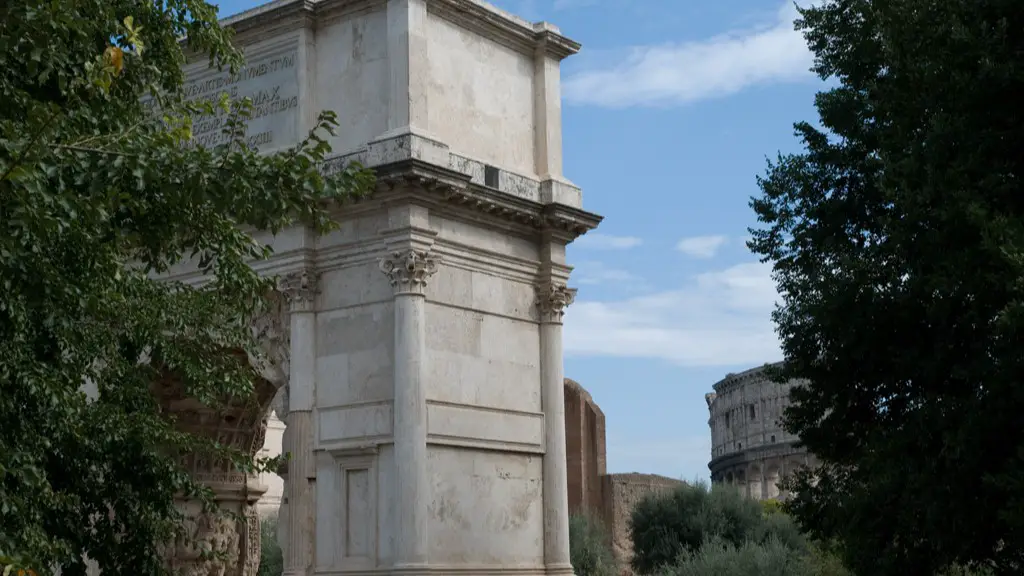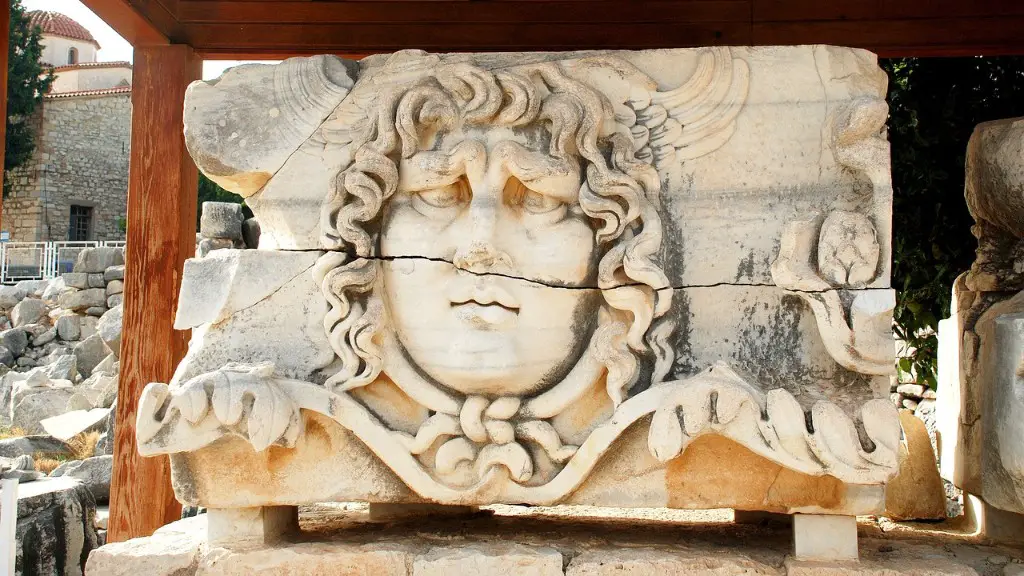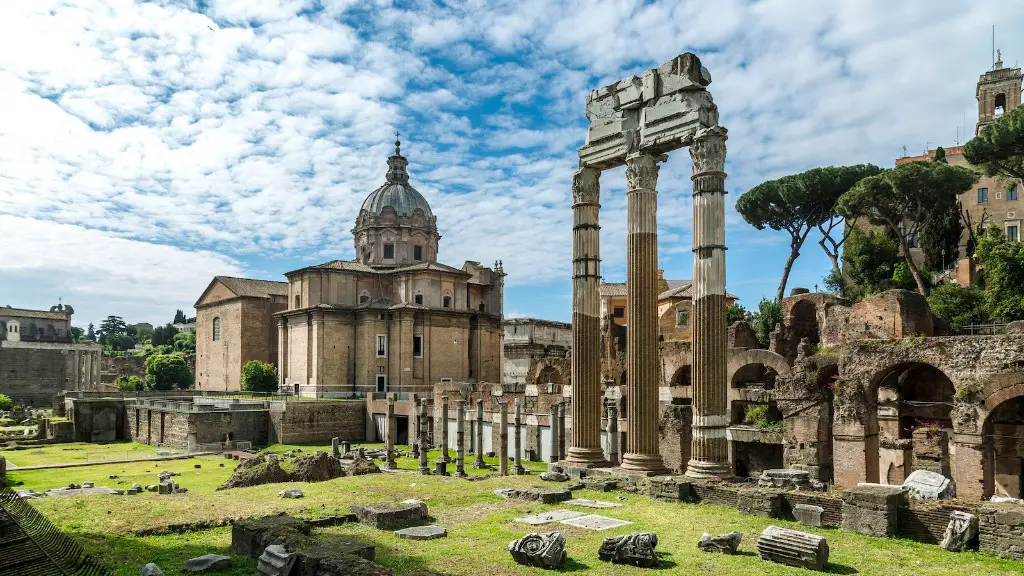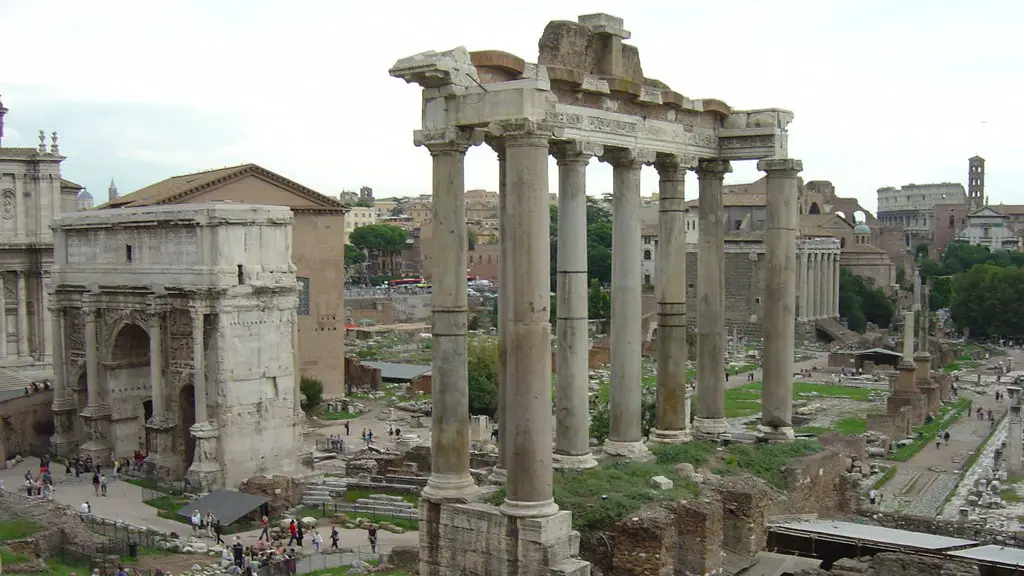Introduction to Ancient Rome’s Religion
Ancient Rome was culturally and religiously diverse, with a variety of faiths and practices. Religion played a significant role in the daily life of citizens, and some of the beliefs and customs stayed strong for centuries upon centuries. The Roman Empire was also tolerant and syncretist, embracing foreign gods and melding aspects of foreign religions with their own worship. Rome, however, was not without its own set of traditional gods and religious practices that were unique to the city.
The ‘Capitoline Triad’
The three major gods of the Roman pantheon were called the “Capitoline Triad” and consisted of Jupiter, Juno, and Minerva. Jupiter was said to be the supreme god of the Romans and the father of all gods. Juno was the wife of Jupiter and the most important female deity in the Roman religion. Minerva was the goddess of wisdom, music, and strategy. These three major gods and their various temples were located on the Capitoline Hill, the oldest and most important of the seven hills in Rome.
Sacrifices and Everyday Offerings
Sacrifices, feasts, and offerings were an essential part of Roman religion. These were held to appease and honor the gods, as well as to ensure success in business, military endeavours, or fertility. Sacrifices were typically animals, although ritual practices also included burning incense, making libations, and gathering grains, wine and oil in offering bowls. Special sacrifices were also held to mark funerals, dedications of temples and altars, or special festivals.
Festivals, Rituals and Ceremonies
Romans celebrated a variety of festivals and ceremonies throughout the year. Some dates marked their major religious holidays, such as the Saturnalia and Lupercalia. Others celebrated the successful harvest, such as the Ludi Cereris, the Portunalia and the Ambarvalia. Romans marked any significant occasions with ritual performances, public prayers, and processions into the temples.
Imported Religions
As the Roman Empire grew, so too did the faiths and beliefs within it. Ancient Rome saw the influx of several foreign religions, which were often syncretized with traditional Roman worship. Cybele, Isis and Mithras were some of the major Eastern cults brought to Rome, while the Greeks brought their own versions of the gods. Jews and Christians also began to make their presence known in the Empire, and in time they would be recognized as legitimate faiths.
Influence on Society and Culture
Ancient Roman religion influenced politics, literature, art and even daily life. Roman holidays were often determined by religious cycles, which in turn shaped the economic and political life of the city. Religious rituals and offerings served to strengthen family and social connections. Finally, religious symbols and images were used in literature and art, with stories of gods and goddesses serving to entertain and inform.
Legacy
As Rome grew and changed, so did its religious practices. Nevertheless, the influence of the gods of the Capitoline Triad stayed strong throughout the centuries. Even today, references to Jupiter, Juno and Minerva can be found in everyday life, often in expressions of language, art and film. Ultimately, the legacy of Ancient Rome’s religion lives on to this day.
The Rise of Christianity
By the 5th century, Christianity had become increasingly popular in the Roman Empire and eventually it would supplant the old imperial religion as the main faith. This dramatic shift was marked by the conversion of Emperor Constantine in 312 CE, and the subsequent passage of the Edict of Thessalonica which established Christianity as the official religion of the empire. This event would forever change the religious landscape of Ancient Rome.
Christianity’s Impact on Ancient Roman Religion
With the rise of Christianity, many of the old religions and practices began to die out or were gradually adapted to fit in with the new faith. It was particularly difficult for cults such as the Mithraic Mysteries, which could not easily be molded into something that would please Christian authorities. Similarly, aspects of the ancient ways that were deemed too close to the pre-Christian faith were frowned upon or suppressed.
Continual Evolution
As times and empires changed, so too did the religious landscape of Ancient Rome. What was once a vibrant and diverse spiritual expression steadily dwindled over time as foreign religions were adopted, suppressed, or assimilated into the mainstream faith. While the old gods and rites have not been completely forgotten, the true extent of their original power and worship may never be recovered.
The Role of Aristocrats
The role and status of the Roman aristocracy was closely related to religious practices. A majority of aristocrats were patrons of religious festivals and temples, and their presence was invaluable in the organising of public worships and offerings. Their influence was noticeable in the choice of gods they favoured and in their generosity in offering gifts and sacrificial payments.
Mystery Cults
The ancient Romans also had an interest in mystery cults, which held sacred rituals, or mysteries, which were normally closed to the public. These cults often revered one deity in particular, such as Isis or Mithras. Worshippers of these cults participated in the mysteries in order to gain a better understanding of the gods and gain their favour. Mystery cults had a strong emphasis on personal enlightenment and transformation, and were seen as alternatives to the traditional Roman religion.
A Turn Towards Monotheism
The past few centuries have seen a gradual movement away from polytheistic religious practices and towards monotheism. While the public worship of the gods of the Capitoline Triad may no longer exist, aspects of these gods live on in modern symbols, language, and culture. Monotheistic faiths have also become increasingly popular, with Christianity and Islam playing an important role in modern-day religious beliefs.



